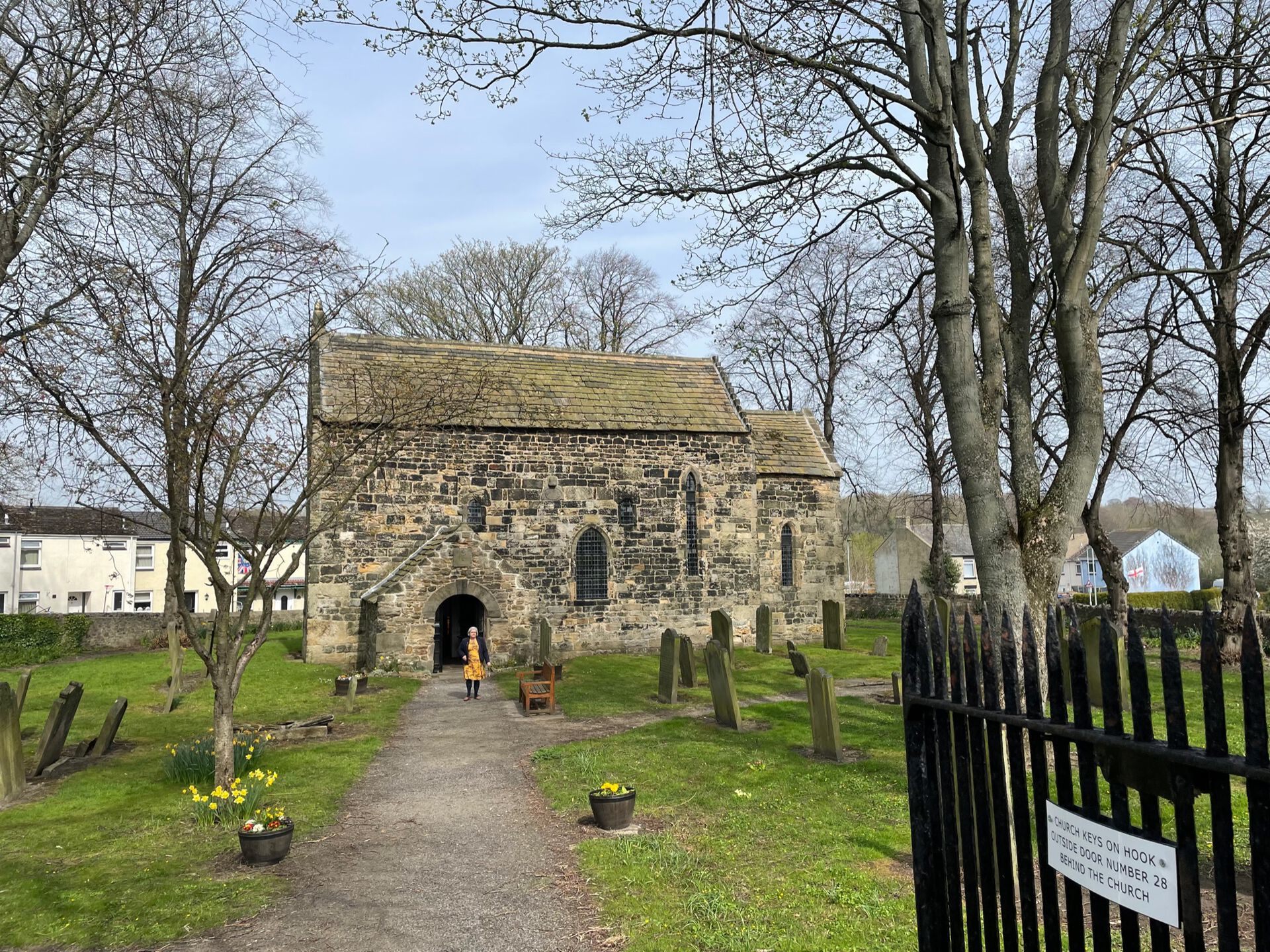Escomb to Bishop Auckland
Now that we're starting to make our way through County Durham proper, and as the days lengthen and lengthen with the warming weather, we're able to do shorter jaunts along the Weardale Way after work or on lazy weekend afternoons. So on a sunny day in the middle of April, we made the 45-minute drive out to Escomb to finish the long section of the walk from the bottom of Weardale at Wolsingham to the big south Durham town of Bishop Auckland.

We parked the car outside the old Saxon church and stopped a while inside to chat with the deputy churchwarden, who was cleaning up after some Easter festivities. She told us about the bats that live in the roof, the vicars that come to hold services in Escomb, and the awful traffic on the single road out of Escomb, during school drop-offs when the cars come to a standstill for 15 minutes or more. We bade happy Easter to the deputy, wrote in the guest book and were on our way.

The Way crosses a couple of fields on the right bank of the river—pretty standard stuff at this point—and enters a wood that comes down to meet the Wear from the suburbs of Bishop Auckland. Plenty of soil erosion around here; the trail marked on the map has been eroded, so we wound up climbing a good deal of the way up the bank before meeting a large trail coming back down again. Expect a lot of mud here if you're walking in the wintertime.

The trail back down the bank afforded some nice views over the river, so we stopped and had a quick drink of water before continuing on to the rugby ground. No one practicing that day—just a couple of ladies taking their dog out for a walk. The Way follows a tarmac road up to where it meets a little road coming down between ex-mining terraced houses to the ancient Newton Cap Bridge.

Newton Cap Bridge was built in the 1400s (and renovated several times since) as a means to reach a "new town" on the cap of the hill opposite, near where Toronto sits today (so named because the coal baron who owned the land was in Toronto, Canada, when he learned that coal was discovered on his land). It's famous for a stone inscribed with Edwd Palfreys Leep 1744, for a man who fell from the bridge not once, not twice, but three times, without being injured (or, at least, without dying). The bridge carried the traffic of the A689 until 1995, when the railway viaduct just next to it was converted to motor vehicle use.

We crossed the bridge, wandered underneath the massive viaduct, and then climbed the hill to the A689 along the entry road to Kynren, which I think is something like Medieval Times minus the food? Kids who have been on field trips there have given it rave reviews.
From here we wandered across the railway viaduct and back into town for a quick pint. Newcastle were playing so the pubs were absolutely rammed; we downed some lager outside and made our way back to Escomb by much the same trail.